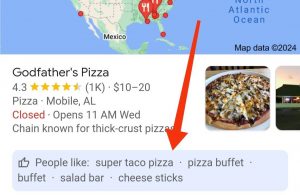Many new businesses sign up for pay-per-lead service because it seems like a foolproof way to get business on a shoestring budget. What they all find out though, is that the shoestrings had better be ropes because the costs for these services can be severe.
The Math Error
Many people make a simple math error on these programs. They think that a $20 lead means that they’ll clear $80 on a $100 job. The problem here is that they’ve left out the fact that those leads are typically shared with other competitors. That means that 3-6 other companies are also fighting for that business. Assuming you’re one of 5, that means you should, on average, land 1 out of every 5 leads. That means you spend $100 on leads before doing that $100 job. All of your revenue was just consumed by the marketing efforts and you haven’t even accounted for your other costs like fuel, tolls, parts, or wear-and-tear.
The Post-Merger Double-Pay
Now that HomeAdvisor and Angi have merged, we’re seeing yet another problem. People enrolled with both services are finding that they’re paying each of them for the same exact lead. So now you’re not just paying for 5 leads to close a job, you’re paying one of them for a shot at 5 leads, but also paying a second time for some of those same 5 from the other company. That means you’re financially better off just sleeping in that day.
The Fix
There’s a way out, and it’s not even that hard.
- Recognize that the root problem is the pay-per-lead model. Your marketing vendor is financially incentivized to send you as many leads as they can force you to pay for. Your goal is to pay for only the minimum number of leads you need. Your goals are actually counter to one another. It’s actually in their best interests to tire you out so you give up and just pay for the bogus leads rather than fight about every single one. That’s a huge red flag for any vendor.
- Drop one or both of these vendors. Since there’s so much overlap between these two companies, you will not get $200 of value by spending $100 with each one. Each dollar spent with the second company brings a diminishing return which just wastes your resources. Even if you manage to dispute the duplicate leads, you’re still wasting time on the endeavor.
- Reinvest those savings into yourself. Get your own web presence properly set up so you need to pay for leads at all. When done right, you should be able to generate inbound calls without paying the extortionate rates that pay-per-lead companies charge.
- Just because you built it, doesn’t mean they’ll come. Your site will need some time to gain traction, so use that time to add content to it in the form of blog posts and detailed pages describing each service you offer. Not a writer? Not a problem. We write pages for people every single day and would be happy to help you. You can check that service out here, and even sign up online if you want.
- Pick the low-hanging fruit first. That site needs backlinks in order to rank. You can jump-start this process on easy-mode with services like our Directory Dominator. Just plug in your info and wait while the backlinks pour out onto directory sites all over the web. You’ll see more and more of your calls come in from your own sources as your rankings improve. Just remember, nothing is instantaneous so give it a little time.
Now you can go count all your saved money while you laugh all the way to the bank.





